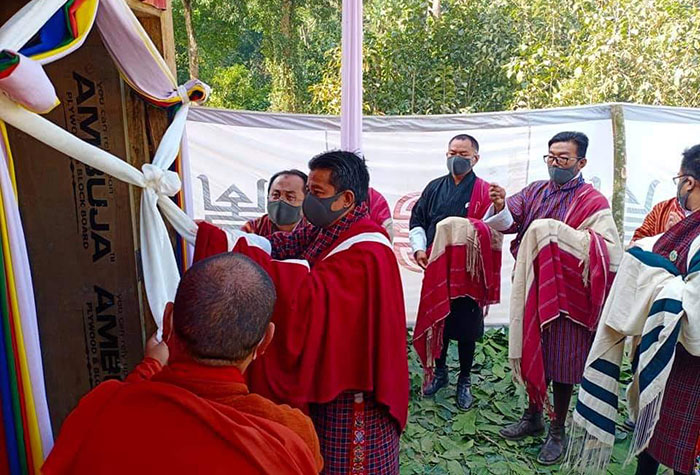Kelzang Wangchuk | Samdrupjongkhar
All trucks ferrying gypsum and essential items to Nganglam, Pemagatshel will be escorted from Tshobali to Nganglam and back to Tshobali.
This is to prevent the importation and transmission of Covid-19 to low-risk areas from the high-risk areas of Nganglam drungkhag because the drungkhag remains a high-risk area.
Nganglam Drungkhag Covid-19 task force opened a switching, holding, and transshipping station at Tshobali on January 18. The station will facilitate the movement of vehicle and people with the standard containment protocols between the high-risk and low-risk areas.
There are two checkpoints (CP) at the station, one each for low-risk and high-risk areas.
According to the standard operating procedure (SoP), the travellers would require a movement authorisation from the respective Covid-19 incident commander and register on the checkpoint management system (CPMS).
“It would be optional to switch drivers of the vehicle ferrying consignments or transship consignments at the station or either ferry directly without changing or transshipping from the low-risk to Nganglam,” the SoP stated.
The switching or transshipping would be done on the first-in-first-out basis based on the CPMS registration. The driver switching or transshipping would be done at the buffer area between the two CPs while the drivers or individuals would remain in the respective holding place.
“If the loaders and unloaders are required, the drivers or individuals should arrange on their own from the high-risk area while the vehicles would be disinfected before the transshipping,” SoP stated.
Vehicles are not allowed to stop on the way, and their movement would be monitored based on the travel time taken between the two CPs while the vehicles plying from the low-risk areas without switching or transshipping would be escorted from the Gashari Bali CP until unloading place in Nganglam.
If drivers from low-risk vehicles fail to adhere to the SoP have to undergo facility quarantine. They should also arrange the mechanic or hand over the vehicles to the workshops if they have any mechanical failure in the high-risk areas.
“But the drivers have an option to return to the low-risk area unexposed immediately on their own expenses or to stay in the high-risk area and undergo the facility quarantine,” SoP stated.


